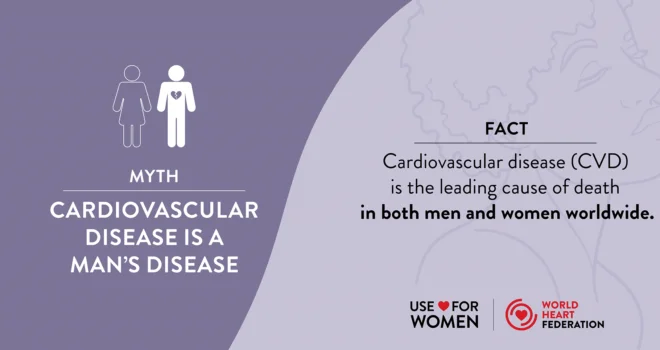
The 4th Global Summit on Circulatory Health, held in Paris on 28-29 August 2019, convened more than 100 thought leaders and changemakers in health, technology, policymaking, academia and civil society to explore how digital health and artificial intelligence are shaping circulatory health around the world.
The next health revolution is already happening
Integrating new technologies into health can be a challenge, but we must also see this moment as an opportunity. “We live in such a rapidly changing area of health – this is why we chose this important topic for the 4th Global Summit on Circulatory Health. This is the next revolution,” said Prof. Jeroen Bax (Leiden University Medical Center), in his opening speech. Prof Calum MacRae (Harvard Medical School) agreed: “Rather than taking a passive approach, what if we took an active approach to the innovation we can achieve together? … No field is better placed for digitalization than cardiology.”
It has never been timelier to focus on digitalization in circulatory health. Prof James Min (Cornell Weill Medical College), opened his keynote lecture with a thought-provoking quote from venture capitalist Vinod Khosla: “By 2025, 80 percent of the functions doctors will do will be done much better and much more cheaply by machines or by machine-learned algorithms.” The consensus at the Summit, however, was that physicians will not disappear, but will need to be an integral part of this digital revolution. “We are moving from a doctor-driven decision-making model to a consultative model with multiple inputs,” explained Dr Francisco Lopez-Jimenez (Mayo Clinic). Christoph Nabholz (SwissRe) added: “Trust must be established multilaterally, between patients, companies, regulatory bodies and others for the sector to develop effectively, and patients need to be involved in designing, implementing and evaluating digital health solutions.”
At a time of momentous change in healthcare, John Frank (Microsoft) referred to artificial intelligence, or AI, as “the defining driver for the next generation”, and this proved to be a recurring theme throughout the Summit.
On the road to patient engagement, be aware of the pitfalls of data
For all its potential, technological innovations in health cannot be harnessed without the patient being involved as a key partner. Liz Ashall-Payne (Organisation for the Review of Care & Health Applications), knows this all too well: “Every day, five million people download a health app. We have more smartphones than toilets and toothbrushes. This is why it’s important to know which health apps are high-quality, useful and safe, and to activate people to access the right solutions for their own personal preferences and needs.” According to Dr.Ben Freedman (Sydney’s Heart Research Institute) this is easier said than done: “It requires more explanations to create the patient’s buy-in.”
When it comes to building patient trust, data plays a crucial role. Adrian Baker (UK National Health System), placed patient buy-in in the context of data management: “One challenge is convincing patients of how important it is to have access to digital health. There are many fears around data misuse.” Jan-Willem Scheijgrond (Philips) added: “Health data is the most valuable data in the world, even more than financial data.”
Even when fears about data usage are assuaged, there is still the challenge of data underusage. As speakers on the panel on innovations in drug discovery, moderated by Nancy Brown (American Heart Association) highlighted, there is so much data sitting in clinical trials that we must take advantage of.
In addition to data mismanagement, existing bias in the data can also be an issue. Prof Amitava Banerjee (Universal College London) said: “80 percent of cardiovascular disease, or CVD, problems are in low- and middle-income countries. Does all this great data that we have actually represent the populations we need to be serving better?” Dr. Lopez-Jimenez agreed: “Many data sets are biased due to the unbalanced participation of mostly white mostly male populations. We absolutely need to be generating more data in low-resource settings, especially in the areas that are evolving rapidly, and precedents are being set.”
To bring health innovations to market, adapt to the local context
Awareness of the context and of the potential for unequal data collection and development of digital solutions is key, especially in low-resource settings and indigenous communities.
“We need to have real data and information about populations in every place,” said Prof Alberto Abello (Polytechnic University of Catalonia). Prof Pablo Perel (London School of Hygiene and Tropical Medicine) agreed: “Most of our CVD problems globally are in LMICs, but solutions are coming from high-income countries. Are they fit for purpose? We need to start with the real problems in the LMIC CVD communities rather than developing technological solutions and then looking for problems.”
Erica Layer (D-Tree International), who has first-hand knowledge of health systems in LMICs, said: “The main challenges are access to care and quality of care in low-resource settings. Digital solutions can help with issues such as a low number of healthcare workers for large populations and delivering a more personalized treatment or healthcare plan.”
Shreya Bhatt (Medic Mobile) explained, “AI and technology alone can’t drive the outcomes we want, we need an environment where such tools can work effectively.” Riccardo Lampariello, Terre des Homme, added: “We need to pay attention to the acceptance [of digital tools] among health workers. The tool needs to bring added value, not just be another gadget adopted to get money from an international NGO.”
Thibaud Lefort (Sanofi) recommended considering a different and broader set of barriers in low-resource settings in order to create a business model that is sustainable over time. Charles Gore (Medicines Patent Pool) agreed that sustainability and adaptability to local contexts are key: “When we talk about ‘bringing things to market’ we need to think of the whole market at the same time, rather than just the affluent Western market.” David Albert (AliveCor) agreed: “We started by focusing on the affluent world, but digital health solutions can be most effective in lower-resource settings.”
Eugene Boadu, from Ghana-based mPedigree, provided a case-in-point of home-grown digital solutions. “We have worked on an innovative way for patients to check that each part if their medicine bears a unique identifier, thus ensuring its authenticity. We are turning the system on its head, fighting counterfeiting from the ground-up and turning consumers into advocates.”
Mapping the road ahead
As we map the road ahead, there is cause for optimism. Robert Madelin (FIPRA International) pointed out: “New technologies will not make us redundant, but ignorance of new technologies might.” Martin Seychell (European Commission) agrees: “The next five years are crucial. Technology is developing rapidly – we need to address its impact on our health systems as a matter of urgency.” Capacity building, partnerships, learning from other fields, using a bottom-down approach instead of a top-down model, and building a culture of trust and transparency are all key elements of the digital transformation.
Cities, where 68 percent of the global population will live by 2050, are driving innovation in digital health. In her keynote lecture, Ann Aerts, Head of the Novartis Foundation, spoke of the Foundation’s work on hypertension and of its programme Better Hearts, Better Cities. “Cities provide a great access point, but the context is multi-layered and we can’t address health system problems alone, so we partnered with agriculture, education, technology to address the underlying causes and contributing factors to hypertension … Digital health is the glue that holds together health projects, helping keep track of patients throughout their hypertension journey.”
Chinese cities are at the forefront of some of these innovations, according to Prof Junbo Ge (China Cardiovascular Association): “Smart cities are one interesting development in the evolution of digital health in China, where non-communicable disease interventions have exploded in the last 40 years.” Gauden Galea, WHO China representative in China, added: “There is a very strong national focus on digital health in China. Everything is done digitally in terms of healthcare; doctors use apps to send prescriptions to pharmacies, and cashless payments are made at pharmacies via an app.”
Digital health, artificial intelligence and machine learning are all here to stay. Implementing these innovations will require better science, better evidence, and better incorporation into national healthcare systems. Digital health frameworks will also need to be adapted to the country context and be supported by closer collaboration between all areas of government, healthcare professionals, industry, tech and patients. It’s up to all of us to make this happen.


